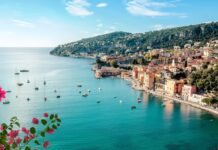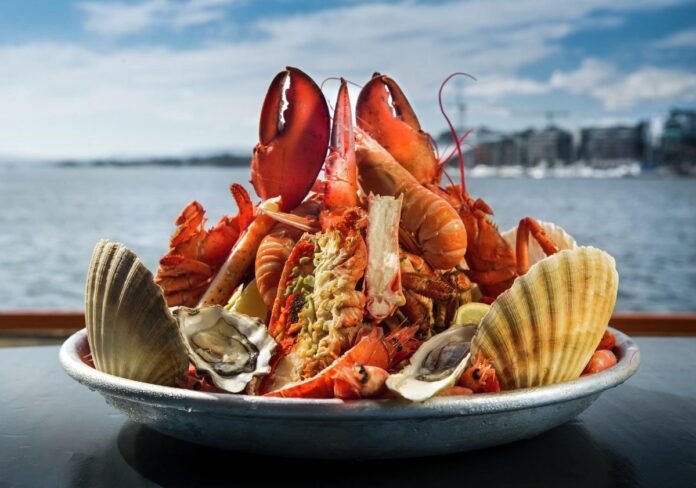
Norway, with the world’s second-longest coastline, intertwines deeply with seafood, both culturally and gastronomically. The crystal-clear waters of Norway have nurtured a fishing tradition that dates back centuries, providing sustenance for countless families.
While the fishing practices have transformed since the era of the Vikings, their significance in Norwegian life remains steadfast. This narrative explores the influence of fishing on Norwegian culture through the ages.
The Commercial Landscape of Norwegian Seafood
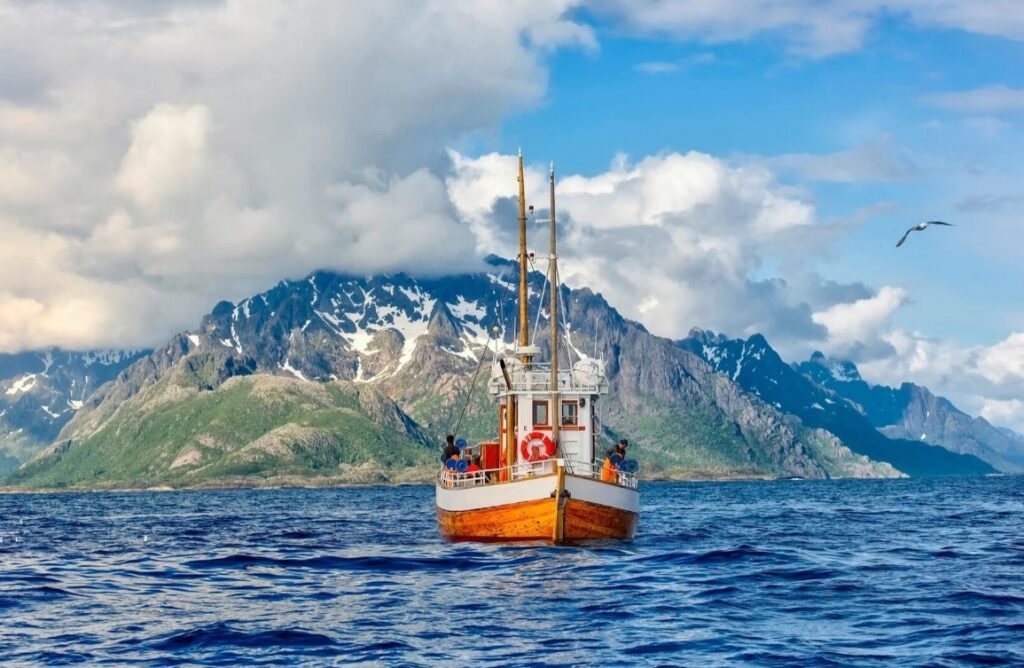
In contemporary times, the fishing sector in Norway has not only assumed a prominent role on the global stage but has also become a part of the serene lifestyle embraced by those who visit.
The mirrored glass cabins offer a tranquil retreat. Here, visitors can unwind and reflect, surrounded by the panoramic beauty of the land.
Norway’s remarkable feat of exporting a staggering 2.9 million tons of seafood in 2022. Salmon reigns as the foremost export, with nations such as Poland, France, and the USA being key recipients of Norwegian aquatic bounty.
Surpassed only by China, Norway’s seafood industry stands as a global powerhouse, contributing significantly to its status as one of the most affluent countries globally. This prosperity is underpinned by the triumvirate of natural resources: oil, gas, and fisheries.
A Cornucopia of Marine Delicacies
Norway’s seafood industry is renowned not just for its economic prowess but also for its diverse offerings. The country’s varied geographical landscape, stretching from the north to the south, provides a habitat for a multitude of seafood varieties.
The array of marine delicacies includes both wild-caught and farmed species along the extensive coastline. The seafood repertoire features favorites like salmon, cod, haddock, trout, skrei (the migratory variant of cod), along with shellfish delights like shrimp and crab.
Additionally, Norway is a significant exporter of preserved seafood specialties, including salted fish, dried fish, and the traditional stockfish.
Commitment to Sustainable Seafood in Norway
Norway stands at the forefront of promoting sustainable practices in fishing and aquaculture. The country aligns with globally recognized standards, notably the ASC and MSC certifications endorsed by the World Wildlife Fund (WWF).
The presence of these certifications on seafood products is a testament to Norway’s dedication to eco-friendly salmon and trout farming.
These accolades are not just labels but affirmations of Norway’s commitment to preserving fish populations and fostering the vitality of marine ecosystems for generations to come.
Innovation in Sustainable Aquaculture
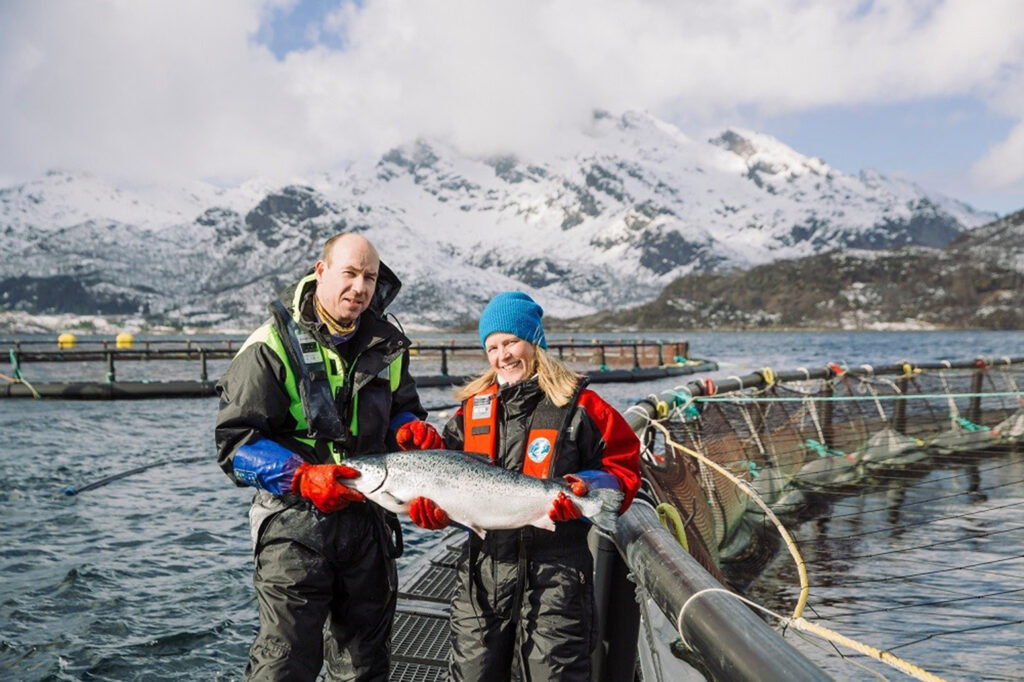
The evolution of sustainable practices in Norwegian salmon farming is noteworthy. Traditional feeds based primarily on soy are being replaced by innovative alternatives.
Norwegian researchers are at the vanguard, integrating ingredients like insect meal, microalgae, and even mussel-based feeds into aquaculture diets.
These novel feeds, though currently produced on a smaller scale, hold promise for environmental conservation and the nurturing of robust salmon.
Moreover, the integration of solar panels in fishing facilities reflects Norway’s broader commitment to renewable energy and sustainability.
The Voyage of Seafood from Ocean to Table
Norway’s culinary scene takes pride in its traceability, offering patrons insight into the journey of seafood from ocean to table. Rigorous standards ensure that the abundant marine offerings are of the highest quality.
With most of the population residing along the coastline, access to fresh seafood is a daily reality. Fishing boats deliver their bounty directly to markets, fresh produce sections, or restaurants.
For destinations further inland, rapid freezing post-catch is the norm, guaranteeing freshness upon arrival.
The Lifecycle of Farmed Fish
The meticulous process of fish farming mirrors the nation’s dedication to quality. It begins with eggs in freshwater containers, transitioning to fry after about two months.
These fry continue in freshwater for 8-15 months until they reach a modest 60-100 grams, at which point they are relocated to saltwater habitats.
Here, they mature for one to two years until they reach the optimal weight of 4-6 kilograms. Post-harvest, the salmon are humanely euthanized, cleaned, and chilled.
This marks the final stage before they grace the displays of restaurants, stores, and fish markets, or embark on journeys to international destinations.
Norwegian Seafood: A Blend of Tradition and Nutrition
Norwegian cuisine boasts an array of seafood delicacies that are deeply rooted in the nation’s heritage. These traditional dishes, born out of necessity to preserve seafood during lean times, have transcended their humble origins to become culinary classics.
Gravlaks, with its savory blend of raw salmon, salt, sugar, and dill, is a testament to the ingenuity of preserving food. Similarly, stockfish, air-dried on coastal racks and evolving into the iconic lutefisk through rehydration and lye soaking, showcases the age-old preservation techniques.
Despite the advent of modern refrigeration, these time-honored recipes continue to charm both locals and gastronomes alike. In urban culinary hotspots, esteemed chefs are reimagining these classics, marrying traditional flavors with contemporary presentation.
Dining establishments like Havmat in Oslo, Under in Lindesnes, Lofoten Food Studio in Ballstad, and Aster in Bergen are at the forefront of this culinary renaissance, offering dishes that are a testament to Norway’s rich maritime legacy, prepared with locally sourced, ocean-fresh ingredients.
A Bounty of Health Benefits
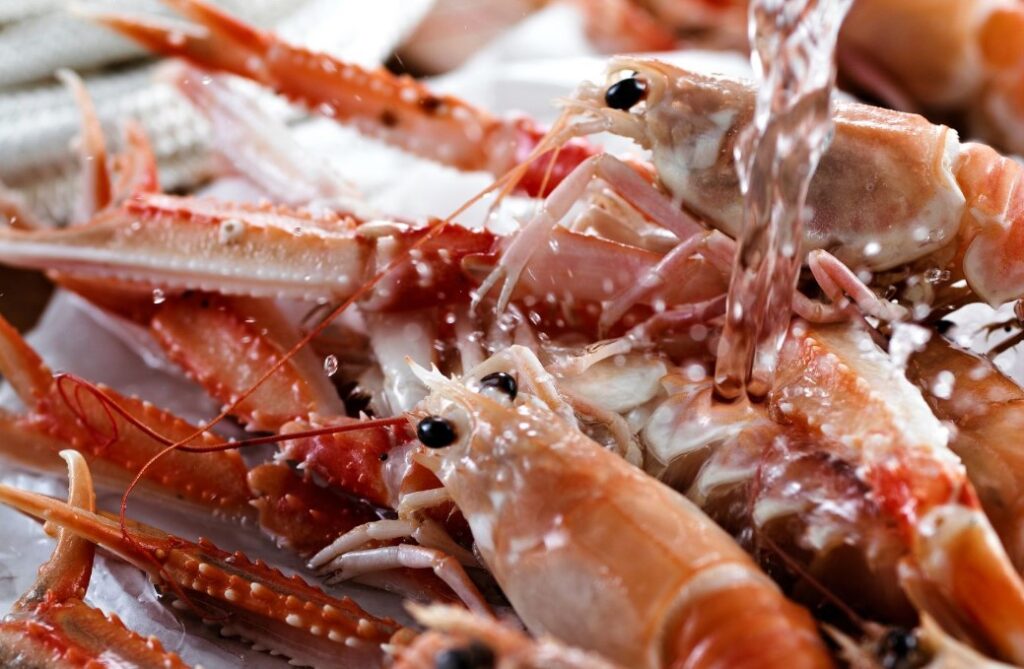
Beyond its rich flavors, Norwegian seafood is a powerhouse of nutrition, offering a plethora of health benefits. Rich in protein, vitamins D and B12, iodine, and omega-3 fatty acids, seafood from Norwegian waters is a cornerstone of a healthy diet.
The tradition of consuming fish daily along the northern coastlines is not just a cultural practice but also a healthful one. Moreover, the Norwegian diet includes “tran” or cod liver oil, a byproduct of fishing, renowned for its high omega-3 content.
This dietary staple has been a guardian of health through the dark, vitamin-D scant winters, symbolizing the intrinsic bond between Norwegian culture, cuisine, and well-being.
Norwegian Cuisine: A Testament to Simplicity and Flavor
In Norway, the culinary philosophy often circles back to a fundamental principle: simplicity is the soul of great food. This notion is vividly illustrated in traditional Norwegian dishes that celebrate the natural flavors of fresh, local ingredients.
A classic example is the straightforward yet delectable boiled cod, served with an accompaniment of potatoes, carrots, and broccoli, epitomizing the essence of Nordic minimalism.
For those seeking comfort in a meal, fish balls in a creamy white sauce or an open-faced sandwich adorned with smoked salmon and a fluffy omelette provide a taste of Norway’s culinary heritage.
These dishes, though simple, are a testament to the profound flavors that can be coaxed from minimal ingredients.
Versatile Seafood Delights
Mussels serve as a versatile ingredient in the Norwegian kitchen, ready to be transformed by the subtle nuances of white wine or the robust flavors of beer in a steaming pot.
As the crab season unfurls, the ritual of boiling crabs to be enjoyed with fresh bread and mayonnaise becomes a celebration of the bounty of the sea.
Norway’s culinary landscape invites you to embark on a gastronomic exploration, whether by casting a line into its pristine waters, savoring the catch of the day at a cozy local eatery, or relishing the culinary creations at a high-end restaurant championing sustainability and locally-sourced produce.
The culinary journey extends from the tranquility of a mountain hike, where a simple meal is prepared on a camping stove, to the luxurious setting of glamping where dishes are crafted over an open flame.
Embracing the Bounty of the Sea
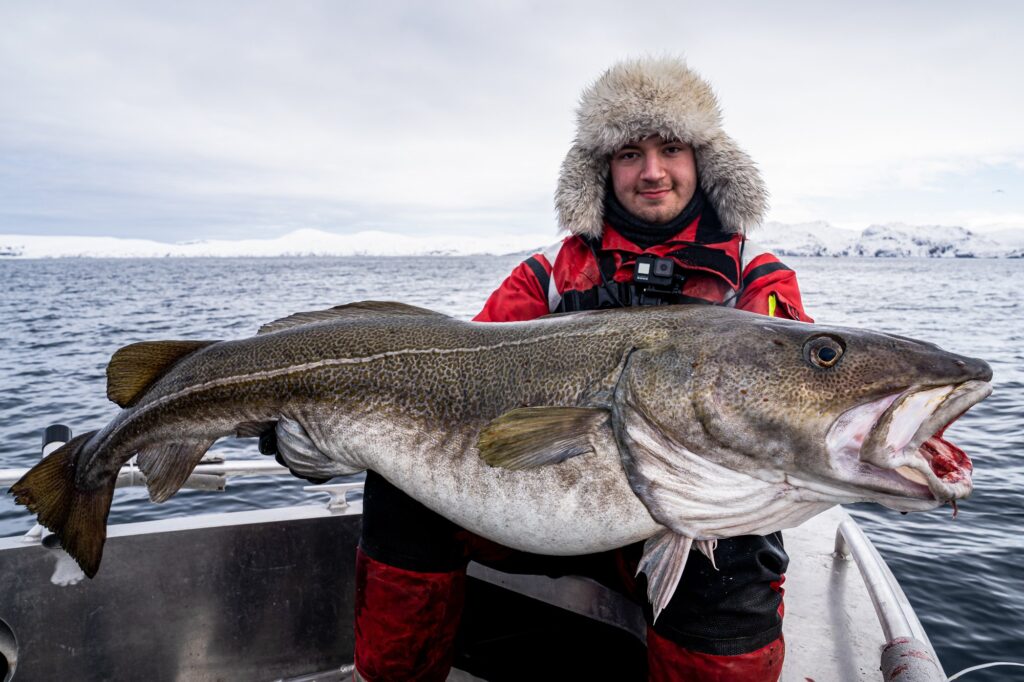
In a land where the sea’s riches are woven into the fabric of culture and history, Norwegian and Sami traditions are intimately connected with the harvest of the sea.
The invitation to explore the vast array of fish and seafood is an invitation to partake in a heritage that is both local and globally esteemed.
Whether you’re a local or a visitor, embarking on a culinary journey through Norway’s seafood offerings is not just about nourishing the body but also about enriching the soul with the flavors that have shaped a nation’s palate.
Enjoy the journey, for every bite is a story of the sea, waiting to be savored.

